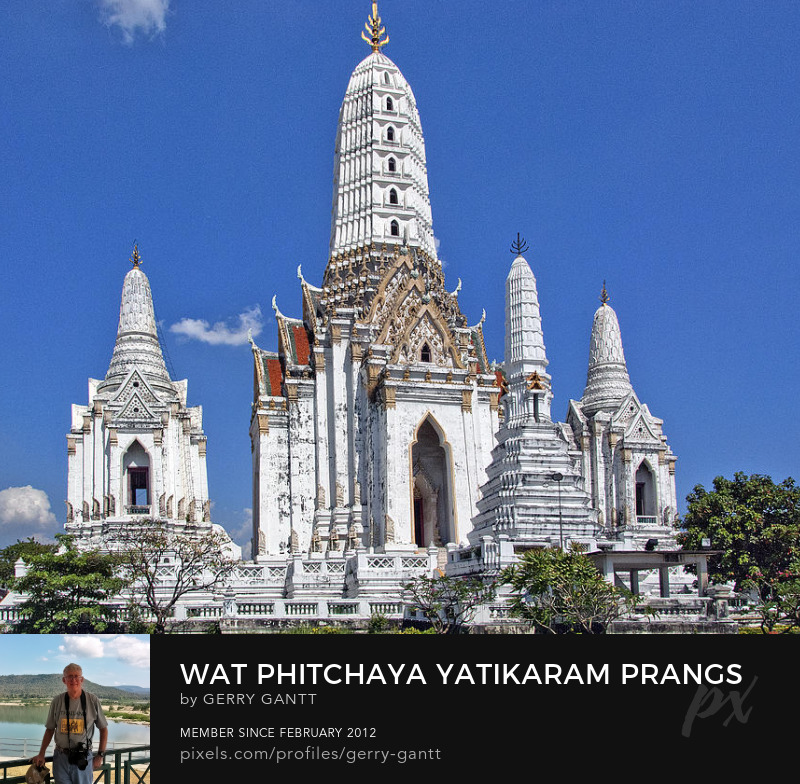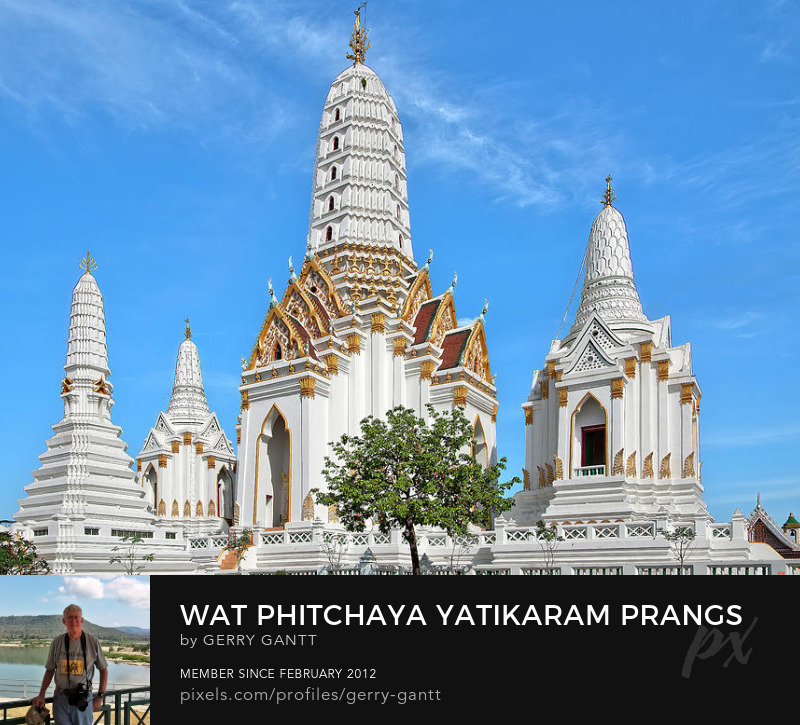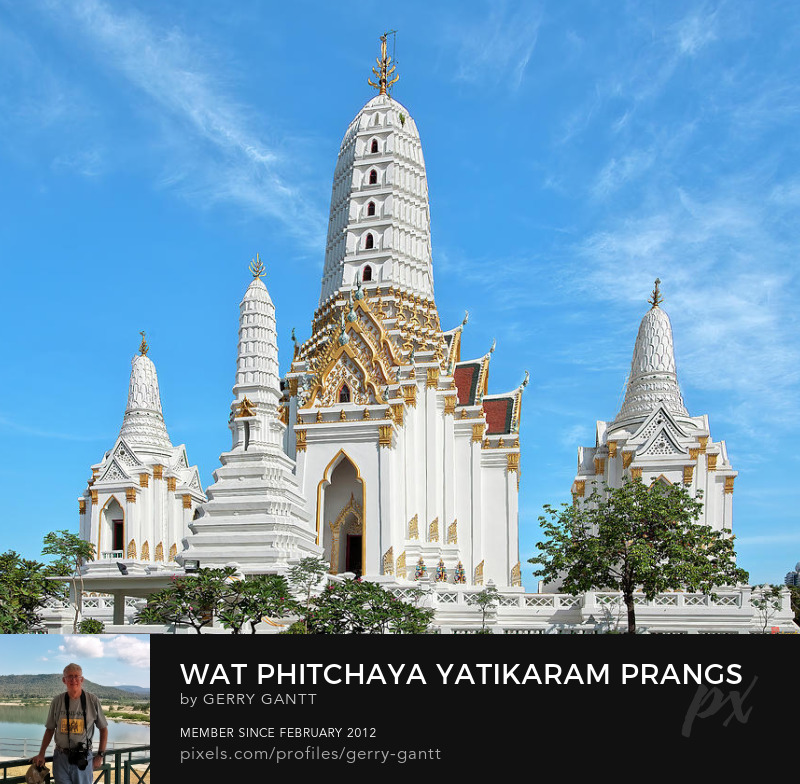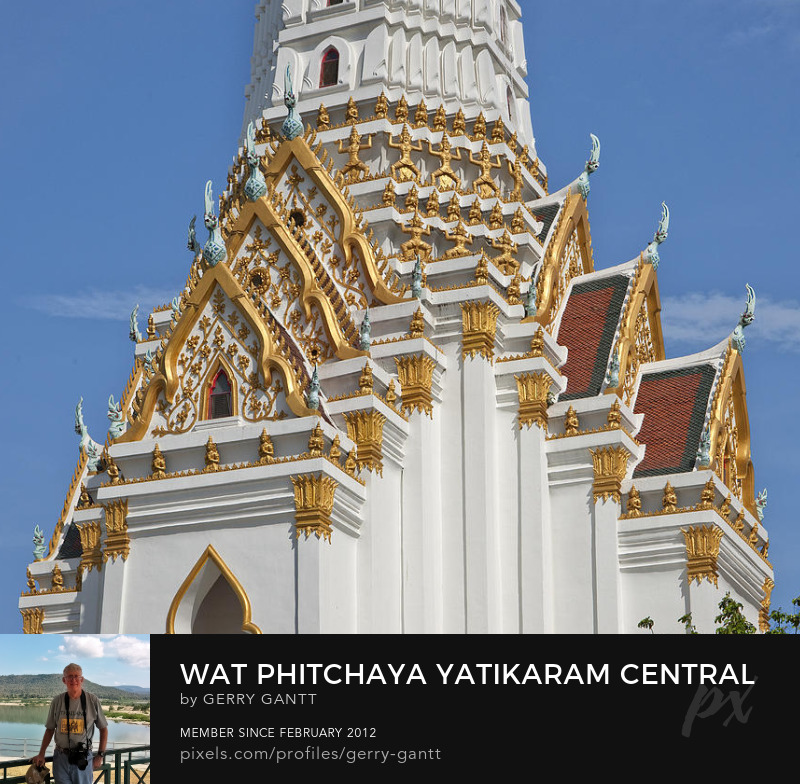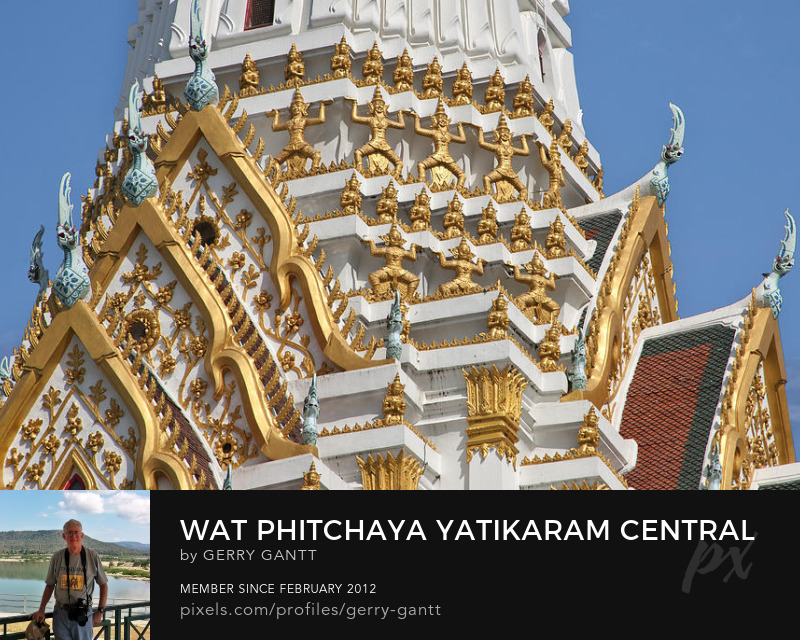|
Wat Phitchaya Yatikaram Worawihan, Khwaeng Somdet Chao Phraya, Khet Khlong San, Krung Thep Maha Nakhon (Bangkok), Thailand Also called Wat Pichaiyat วัดพิชยญาติการามวรวิหาร หรุอ วัดพิชยญาดิ แขวงสมเด็จเจ้าพระยา เขตคลองสาน จังหวัดกรุงเทพมหานคร (กรุงเทพฯ) ประเทศไทย |
|||||
| <^>>^> | |||||
|
Click here to buy photo artwork and other items specific to this set of Temples or click below for latest photos available. |
|||||
| Click or tap thumbnails below to order prints: | |||||
|
|||||
|
|||||
|
Wat Phitchaya Yatikaram Worawihan, วัดพิชยญาติการามวรวิหาร, or Wat Pichaiyat, วัดพิชยญาดิ, as it is also
known, is a second class temple of the Worawihan type. There is no
record of when the temple was originally built, but is likely from the
period when Ayutthaya was the capital of Siam and Bangkok was largely a port
for transshipment of goods to Ayutthaya. During the reign of King Rama
III, Somdet Chao Phraya Borom Mahapichaiyat (That Bunnag or Lord Bunnag)
who was the Phraya Sri Phiphat Rattanaratkosa, a high ranking
official in the king's court, discovered the temple and decided to restore
it as a favor to the king. That Bunnag had many junks that were
used in trade with other countries. Therefore, most of the materials
used in the construction of the temple were actually brought from China.
This resulted in the temple having a distinctive Chinese architectural
style. The most important features of the temple hall is that it is a
small Ubosot with a roof that resembles a Chinese carriage hood and no
chorfa (a finial on the roof, typical of Thai temples). The temple
roof edging on both sides is made of cement shaped into dragons (which can
be seen in DTHB394) with tiles as well. The roof top in the balcony is
painted with flowers of various colors, the phalai pillar is made
from a circular stone and on the base of the pillar are carvings of pictures
from the Chinese legend "Samkok" ("The Romance of the Three
Cliques"). The main entrance of the Ubosot is decorated with a water
color painting of a Chinese warrior stepping on a lion. The middle
door is also decorated with a water color painting of an Angel carrying a
double-edged dagger and stepping on a lion. Within the Ubosot, the
ceilings and columns have beautiful flower artwork. the ceiling above
the main window has paintings of various heavenly trees, such as the Nari
Phon tree and the Pink Cassia. Behind the Principal Buddha
image is an painting of a glass arbor. The front area of the Ubosot is
paved with stone pieces from China. The leaf-like boundary stone of
King Rama III's reign was a double stone and the arbor for the boundary
stone was designed by Thai craftsmen but the stones themselves were
specially ordered to be carved in China. The Principal Buddha image is
from the Sukhothai Era and is known as Phra Sittharot. The most
noticeable structures of the temple are the immense Prangs at the rear of the
compound. This edifice was constructed by That Bunnag to
contain the ashes of his family. Inside the largest central Prang,
four Buddha images look out in each of the four cardinal directions. วัดพิชยญาติการามวรวิหารเป็นพระอารามหลวงชั้นโท ชนิดวรวิหารเดิมเป็นวัดร้าง สมเด็จเจ้าพระยาบรมมหาพิชัยญาติ (ทัตบุนนาค) ครั้งดำรงยศเป็น พระยาศรีพิพัฒน์รัตนราชโกษา ได้ปฏิสังขรณึ้นใหม่เมื่อปี พ.ศ. ๒๓๘๔ ในรัชกาลที่ ๓ เนื่องจากท่านมี เรือกำปั่นค้าขายกับต่างประเทศอยู่หลายลำ จีงหาชี้อวัสตุก่อสร้างส่วนใหญมาจากจีน ถาวรวัตถุที่ก่อสร้างขี้นจีงมีลักษณะสถาปัตยกรรมแบบจีน สิ่งสำคัญในพระอาราม มีพระอุโบสถขนาดย่อม หลังคาแบบเก๋งจีน ไม่มีช่อฟ้าใบระกา หน้าบันทั้ง สองด้านเป็นลายปูนปั้นมังกรสอดสีประดับกระเบื้อง เพดานตามระเบียง เขียนลยดอกไม้สอดสี เสาพาไลเป็นศิลากลม ฐานของพาไลสลักศิลาเป็นรูปในเรื่องสามก๊กด้วยฝีมีองดงาม บานประตูหน้าพระอุโบสถเขียนลารดน้ำเป็นรูปเชี่ยวกางเหยียบสิงโต บานประตูกลางเป็นลายรดน้ำรูปเทวดาถือพระขรรค์เหยียบราชสีห์ ด้านในพระอุโบสถฝาผนังและเสาด้านในมีภาพจิตรกรรมรูปลายดอกไม้ ผนังบานกกหน้าต่างด้านนอกเขียนรูปต้นไม้สวรรค์ต่าง ๆ เช่น ต้นนารีผลและต้นกัลปพฤกษ์ หลังพระประธานเขียนเป็นรูปชุ้มเรือนแก้ว ลานหน้าพระอุโบสถปูด้วยแผ่นศิลาจากเมืองจีน เสมาสมัยรัชกาลที่ ๓ เป็นเสมาคู่ ชุ้มเสมาช่างไทย ออกแบบ และสั่งและสลักศิลาสำเร็จมาจากเมืองจีน พระประธาในพระอุโบสถ เป็นพระพุทธรูปสมัยสุโขทัย มีพระนามว่า พระสิทธารถ Wikimapia location |
|||||
Scenic Photography by Gerry Gantt from Thailand, the land of Golden Wats. All images Copyright © 1999 - by Gerry Gantt, all rights reserved. |




















